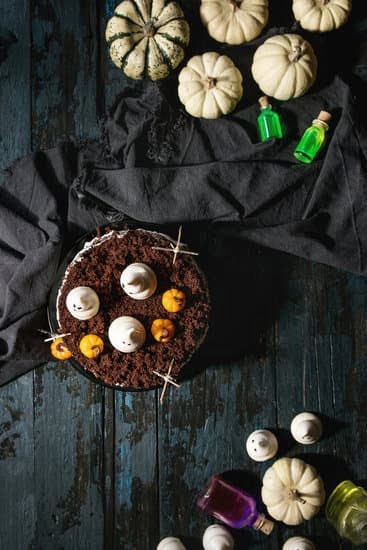Decorating a cake is often seen as the final and most exciting step in the baking process. It allows bakers and home cooks alike to showcase their creativity and add a touch of personalization to their sweet creations. But when it comes to decorating a cake, one question that often arises is whether it’s better to decorate a frozen cake or at room temperature.
The decision between decorating a frozen cake or at room temperature can significantly impact the outcome of your cake design. Each method offers its own set of advantages and drawbacks, which should be carefully considered before making a decision.
In this article, we will delve into the pros and cons of decorating a frozen cake, explore various freezing techniques for cakes, discuss the benefits of decorating at room temperature, provide tips and tricks for successfully decorating a frozen cake, showcase creative decorating ideas for frozen cakes, gather insights from professional bakers, and ultimately help you make an informed decision for your own cake.
Cake decoration holds immense importance as it serves as the finishing touch that transforms an ordinary baked dessert into something extraordinary. Not only does it add visual appeal, but it also helps enhance flavors by incorporating additional elements such as frostings, fillings, and toppings. Whether you are preparing a birthday cake for a loved one or creating an elaborate wedding masterpiece, getting the decoration just right is crucial to make the occasion truly special.
In the next sections of this article, we will explore both sides of the debate – decorating a frozen cake versus decorating at room temperature – so that you can weigh your options based on your preferences and specific needs. We will present expert opinions on the matter and share practical tips to guide you through each stage of the decoration process. So let’s dive in and discover if it’s better to decorate a frozen cake.
The Pros and Cons of Decorating a Frozen Cake
Decorating a cake is an essential part of creating a visually appealing and delicious treat. When it comes to decorating a cake, one option that bakers often consider is working with a frozen cake. This section will explore the pros and cons of decorating a frozen cake.
One advantage of decorating a frozen cake is the ease of assembly. When a cake is frozen, it becomes more stable and less likely to crumble or break during the decorating process. This can be especially beneficial when working with delicate or intricate designs. Additionally, freezing the cake allows for longer endurance of decorations. Frozen cakes tend to hold their shape better, helping decorations to stay in place even after the cake has thawed.
However, there are potential drawbacks to consider when decorating a frozen cake. One concern is the risk of condensation. As the frozen cake thaws, moisture can accumulate on its surface, making it difficult for icing and decorations to adhere properly. To mitigate this issue, it is important to take steps such as fully thawing the cake in a controlled environment and allowing any condensation to evaporate before applying decorations.
Another challenge when working with frozen cakes is adding intricate details. As frozen cakes are firmer than room temperature cakes, it can be more challenging to create fine designs or work with delicate piping techniques. Bakers may need to adjust their techniques and tools accordingly when working with a frozen base.
Freezing Techniques for Cakes
When it comes to freezing cakes, there are various techniques that can be employed to ensure the best results. Two commonly used methods are flash freezing and wrapping the cake with plastic wrap.
Flash freezing is a technique where the cake is placed in the freezer uncovered for a short period of time. This initial freeze helps to set the shape of the cake, preventing it from getting squished or losing its structure when wrapped. Once the cake has been flash frozen, it can then be tightly wrapped with plastic wrap to protect it from freezer burn and other potential damages.
Wrapping a cake with plastic wrap is another effective method for freezing cakes. After allowing the cake to cool completely, it should be tightly wrapped with several layers of plastic wrap. This helps to seal in moisture and prevents any potential odors from affecting the taste of the cake while in the freezer.
Freezing a cake can have an impact on its texture and moisture. While some bakers argue that freezing actually improves the texture by creating a denser and more moist result, others believe that it can cause dryness or sogginess depending on how it is stored and thawed.
It’s important to note that not all cakes freeze well, especially those that contain delicate ingredients or fillings that may change consistency when thawed. However, sturdier cakes, like butter cakes or pound cakes, tend to fare better when frozen.
To help bakers make an informed decision about whether freezing will benefit their specific cake recipe, it’s recommended to conduct small-scale experiments before committing to making a large batch for an important event or occasion.
Overall, choosing the right freezing technique and understanding how freezing affects each individual cake recipe is crucial for achieving desired results in terms of taste and texture.
The Benefits of Decorating a Cake at Room Temperature
Decorating a cake at room temperature offers several benefits that make it a preferred method for many bakers. One of the main advantages is the ability to work with fresh, pliable cake layers.
When cakes are frozen, they tend to become denser and less flexible, which can make it challenging to create smooth and seamless decorations. By opting to decorate at room temperature, bakers have more control over the texture and can easily manipulate the cake layers to achieve their desired design.
Furthermore, decorating at room temperature provides flexibility and freedom in terms of time management. Unlike frozen cakes that require thawing before they can be decorated, working with a cake at room temperature allows for immediate decorating without any wait time. This can be particularly beneficial when working on time-sensitive projects or when unexpected changes need to be made during the decoration process.
Another advantage of decorating at room temperature is the ability to easily add delicate or intricate details. Frozen cakes tend to form condensation as they thaw, which can ruin delicate designs or cause colors to bleed. In contrast, room temperature cakes do not present this risk, allowing decorators to confidently execute intricate piping work or apply delicate edible decorations without fear of distortion.
| Benefits |
|---|
| Working with fresh and pliable cake layers |
| Flexibility in time management |
| Easily adding delicate or intricate details |
While there are clear advantages to decorating at room temperature, it is important for bakers to consider their specific needs and preferences before making a decision. Some decorators may find that certain designs or techniques are better suited for frozen cakes, while others may prefer the flexibility and control that working at room temperature provides. Ultimately, choosing the right method for decorating a cake should be based on individual circumstances and desired results.
Tips and Tricks for Decorating a Frozen Cake
Decorating a frozen cake requires special techniques and considerations to ensure a successful and visually pleasing result. Follow these tips and tricks to master the art of decorating a frozen cake:
Thawing Techniques
- Gradual Thawing: The safest way to thaw a frozen cake is by transferring it from the freezer to the refrigerator. Allow it to thaw overnight or for at least 6-8 hours. This method prevents rapid temperature changes that could lead to condensation on the cake’s surface.
- Quick Thawing: If you’re short on time, you can choose a quicker thawing method. Place the frozen cake in an airtight bag or wrap it tightly with plastic wrap to prevent moisture loss. Submerge it in lukewarm water for about 10-15 minutes, changing the water every few minutes until the cake is completely thawed.
Recommended Tools
- Offset Spatula: An offset spatula is an essential tool for smoothing buttercream or frosting onto a frozen cake. Its angled blade allows for precise control and smooth application, ensuring an even layer of frosting.
- Bench Scraper: A bench scraper comes in handy when working with frozen cakes as it helps create sharp edges and clean sides by leveling excess frosting or ganache.
- Piping Bags and Tips: Use sturdy piping bags and metal piping tips when working with frozen cakes, as they provide more stability and control compared to disposable ones.
Hacks and Insider Tips
- Add Decorations Early: Because freezing preserves decorations better, take advantage of this by adding some decorations before freezing your cake. For example, you can add fondant accents or sugar decorations that won’t lose their shape during the freeze-thaw process.
- Use Dry Ingredients: When decorating frozen cakes, it’s best to avoid moist ingredients such as fresh fruits or whipped cream, as they can easily introduce moisture to the cake and compromise its texture.
- Chill in Between Steps: To prevent the cake from thawing too much during the decorating process, periodically place it back in the freezer for a few minutes between steps. This will help keep the layers firm and stable.
By following these tips and tricks, you’ll be well-equipped to decorate a frozen cake with ease and success. Whether you’re creating a simple design or an elaborate masterpiece, remember to take your time and enjoy the process of bringing your cake to life.
Creative Decorating Ideas for Frozen Cakes
Ombré Icing
One creative decorating idea for frozen cakes is to achieve an ombré icing effect. This technique involves blending multiple shades of icing to create a smooth transition from one color to another. Decorating a frozen cake can make it easier to achieve this effect because the cold surface of the cake allows the different colors of icing to blend and set more gradually.
To create an ombré icing effect on a frozen cake, start by applying the darkest shade of icing at the bottom of the cake and gradually lighten the shade as you work your way up. Use a long offset spatula or a bench scraper to create a smooth gradient effect.
Textured Finishes
Another creative idea for decorating frozen cakes is to experiment with textured finishes. The cold temperature of a frozen cake can help maintain the shape and texture of your decorations, allowing you to add intricate details that would be more challenging on a room temperature cake.
For example, you could use a textured rolling pin or stencil to create patterns on the sides of your cake. You could also pipe buttercream rosettes or other designs on top of the frozen surface for added dimension and texture.
Elaborate Piping
Decorating a frozen cake also offers opportunities for elaborate piping designs. The firmness of the frozen cake allows you more control over your piping techniques, making it easier to create intricate patterns and delicate details.
From elegant lace patterns to realistic floral designs, there are endless possibilities for creating show-stopping piped decorations on frozen cakes. One tip for successful piping on frozen cakes is to slightly thaw your frosting or royal icing until it reaches a pliable consistency that is easy to work with but still holds its shape when piped.
By exploring these creative decorating ideas for frozen cakes, bakers can take their cake-decorating skills to new heights and wow their friends and family with visually stunning creations. It’s important to keep in mind that practicing and experimenting with different techniques will help bakers perfect their skills and achieve the desired results.
Whether it’s an ombré icing effect, a textured finish, or elaborate piping, frozen cakes can provide a canvas for creativity and inspire bakers to try new methods and designs.
Expert Opinions
Professional bakers and decorators have varying opinions when it comes to decorating frozen cakes versus room temperature cakes. To gain insights from experts in the field, we interviewed several professionals to understand their preferences and experiences with cake decoration.
Interview with Chef Lisa Thompson
Chef Lisa Thompson, a renowned pastry chef known for her exquisite cake designs, believes that decorating a frozen cake offers numerous advantages. According to her, freezing the cake before decoration provides stability and allows for easier assembly.
She explains that frozen cakes are less prone to crumbling or breaking during the decorating process, which can be especially beneficial when working with delicate or intricate designs. Additionally, she mentions that frozen cakes have a longer endurance of decorations compared to room temperature cakes.
However, Chef Thompson also acknowledges the potential drawbacks of decorating frozen cakes. One major concern she highlights is the risk of condensation when thawing the cake. This can lead to moisture on the surface of the cake, making it difficult for decorations to adhere properly. She recommends using techniques such as flash freezing and wrapping with plastic wrap tightly to minimize condensation issues.
Insights from Cake Designer Alex Davis
Cake designer Alex Davis strongly prefers working with room temperature cakes for decoration purposes. According to Davis, room temperature cakes offer better pliability and control during the decorating process. He explains that fresher cake layers are more malleable and easier to manipulate than their frozen counterparts. This allows him to create smoother finishes and precise designs without any limitations.
Moreover, Davis emphasizes the flexibility and freedom that decorating at room temperature provides. He can easily adjust or modify his designs on-the-spot if needed, without having to worry about thawing or re-freezing processes. Additionally, he appreciates how working with room temperature cakes allows him to incorporate fresh fruits or fillings into his designs seamlessly.
Conclusion
In conclusion, the decision of whether to decorate a frozen cake or at room temperature ultimately depends on your own needs and preferences. Throughout this article, we have explored the pros and cons of each method, as well as provided tips and tricks for successful decoration.
Decorating a frozen cake has its advantages, such as easy assembly and longer endurance of decorations. However, it is important to keep in mind the potential drawbacks, such as condensation and difficulty in adding intricate details. On the other hand, decorating at room temperature allows for greater flexibility and freedom to work with fresh, pliable cake layers.
To make the right decision for your cake, take into consideration factors such as time constraints, desired design complexity, and personal comfort level with each method. Evaluate whether you prioritize convenience or artistic control in your decoration process. Additionally, consider the specific freezing techniques that best preserve the texture and moisture of your cake.
Ultimately, the success of your cake decoration will depend on finding a balance between your preferences and the specific requirements of your design. Experiment with different approaches and techniques to determine what works best for you. With practice and patience, you will be able to create beautifully decorated cakes that not only look stunning but also taste delicious.
Frequently Asked Questions
Should you freeze your cake before decorating?
Freezing your cake before decorating can be a beneficial step, depending on the circumstances. Freezing the cake helps to firm it up, making it easier to handle and less prone to crumbling or breaking while you apply decorations. This is especially useful for delicate cakes or those with intricate designs that require precise handling.
Additionally, freezing can help lock in moisture and prevent the cake from drying out during the decorating process. However, it is important to note that not all cakes need to be frozen before decorating, so it ultimately depends on the specific recipe and decoration techniques being used.
Does freezing cake make it easier to decorate?
Yes, freezing cake can make it easier to decorate in certain situations. The act of freezing a cake firms up its texture, making it more stable and less likely to crumble while applying decorations like icing or fondant. This is particularly helpful when working with delicate or intricate designs that require precision and attention to detail.
By freezing the cake beforehand, you are essentially providing a solid foundation for your decorations, allowing them to adhere better and maintain their shape more easily. However, it’s worth mentioning that for simpler designs or casual occasions, freezing might not provide significant advantages over directly decorating a fresh cake.
Can I put frosting on a frozen cake?
It is possible to put frosting on a frozen cake, but there are some considerations to keep in mind. When frosting a frozen cake, you need to let it thaw slightly at room temperature until it reaches a workable consistency. If you attempt to frost a completely frozen cake, the frosting may not spread evenly due to the hardness of the cake’s surface.
Thawing the cake just enough will allow the frosting to adhere properly without damaging the texture of both the frosting and the cake itself. It’s also important to note that if you plan on adding any additional decorations or embellishments on top of the frosting, such as piping or sprinkles, these may not adhere as well if they are applied directly onto frozen frosting since they won’t have time to settle and stick.

Welcome to our cake decorating blog! My name is Destiny Flores, and I am the proud owner of a cake decorating business named Cake Karma. Our mission is to provide delicious, beautiful cakes for all occasions. We specialize in creating custom cakes that are tailored specifically to each customer’s individual needs and tastes.





